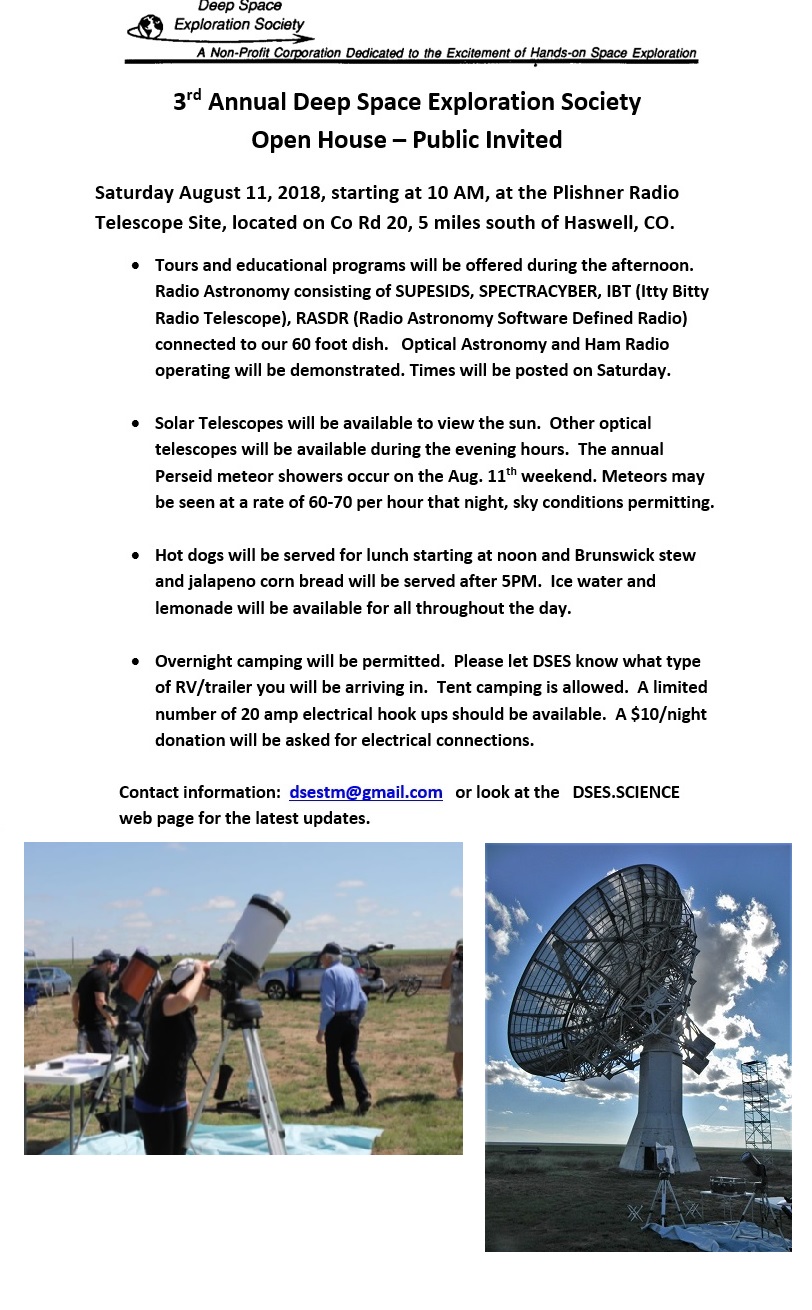Deep Space Exploration Society members Bill Miller, Gary Agranat, and Tony Bigbee participated as judges at the 2019 Pikes Peak Regional Science Fair. The Fair was held at the University of Colorado at Colorado Springs University Center building on Saturday February 23rd. This year 115 students from 20 schools presented projects. The purpose of the fair is to encourage students to take more active interest in the study of science and mathematics, to encourage experiment and consideration of science careers, and to provide a means of reward and recognition. Informally the fair gives students an opportunity to interact with and get helpful feedback from specialists already in the fields.
Bill and Gary were at the science fair to judge and award prizes specifically offered by DSES. The prizes were offered to encourage projects related to astronomy and radio. However any outstanding STEM project related closely enough to the fields were considered. Bill and Gary interviewed 17 students in 16 projects at the fair, at the middle school and high school levels, with most of the topics in physical sciences or engineering. A scoring criteria was used based on the qualities of the ideas, hypotheses, methods, data, and lessons learned.
DSES awarded one Senior Division prizes and two Junior Division prizes:
For outstanding senior division project we gave a certificate and $100 to Mark Bloomfield. Mark received 6 additional special awards from other organizations, and he placed 3rd in the Fair’s Senior Physical Sciences category.
• Mark Bloomfield [grade 11] [project SC9], Coronado High School/David Bloomfield: ‘‘Charged up: Testing lithium ion battery performance using a Raspberry Pi load cell’’
For the two Junior Division prizes we gave a certificate and $50 each to Hailey Kressen and Benjamin Homan.
• Hailey Kressin [grade8] [project 8E10], The Classical Academy JHS/Candus Muir: ‘‘A sixth sense: Omnidirectional presence detection system’’. Hailey received 6 additional special awards, and she placed 2nd in the Grade 8 Physical Sciences & Engineering category.
• Benjamin Homan[8] [8E1], Monument Academy/Karl Brown: ‘‘Does pressure affect carbon dioxide absorption by polyethyleneimine?’’ Benjamin received 5 additional special awards, and he placed 4th in the Grade 8 Physical Sciences & Engineering category.
Tony participated as a general Award Judge for the Fair itself. He judged middle school social and behavioral science projects.
Tony took a few minutes to take some photos. The first three photos are from when Bill and Gary interviewed Connor Takenaka about his cybersecurity project. The third includes Tony.
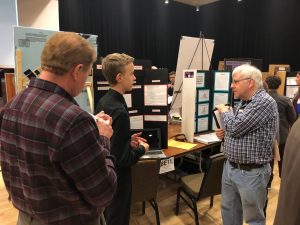
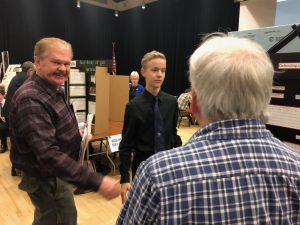

Bill is show interviewing Josh Nakka and Katelynn Salmon for their Senior level science project “Engineering a portable refreshable braille device for improved communication.” Gary is interviewing Jenna Salvat for her Senior level science project “A geothermal analysis of metamorphic lithologies surrounding Cripple Creek and Victor Diatreme”.
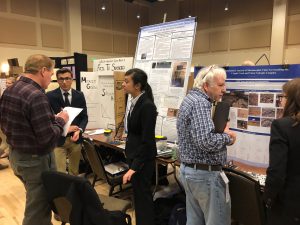
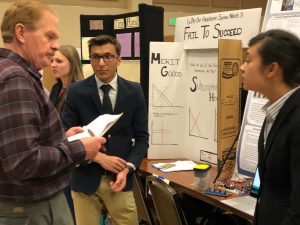
Projects Bill and Gary interviewed:
- “Shields Up” by Samantha Cerniglia. She tested the ability of several materials to block cosmic rays. She built a cloud chamber to do the tests.
- “LED Lights: Hero or Zero” by Michael Wu. He tested energy efficiency savings claims of a set of consumer LED lights, and found those fell short.
- “Energy Efficiency” by Samantha Schaefer. She tested the effects of placing different colored filters on solar energy panels.
- “This Will Blow You Away” by Levi Archambault. He tested the efficiency of windmills with different number of blades, with different wind speed conditions.
- “Prevent Basement Floods” by Austin Cellar. He designed and tested a low cost device to detect basement water leaks and flooding, and send an alarm.
- “Cleaning glasses with portable ultrasonics” by Ty Rockey. He researched, designed, and tested a low cost device to clean eye glasses using water cavitation.
- “Does Pressure Affect Carbon Dioxide Absorption by Polyethyleneimine (PEI)” by Benjamin Homan. He tested the ability of PEI to absorb carbon dioxide at sea level and 7350 foot elevation pressures. He utilized previous research by others and theory that predicted lower pressure would result in less absorption, due to fewer number of molecules per volume. The material would be applicable to CO2 scrubbers in submarines and spacecraft. Benjamin won one of our two Junior Division prizes.
- “Analyzing how various hydroelectric designs can ameliorate the accessibility of tides” by Chandler Wilburn. He tried to design and test an alternate way to generate electrical power from tides, using a large pressure plate instead of flow past a turbine.
- “Neodymium field slide” by Amir Laarja. He tested different position configurations of magnets in a generator, to test differences in efficiency.
- “A sixth sense: Omni-directional presence detection system” by Hailey Kressin. She designed and tested a system to detect the presence of approaching objects within 1.5 meters in 1 second, to aid people who are blind. Hailey won one of our two Junior Division prizes.
- “Cybersecurity: Defending our Computers” by Connor Takenaka. He tested the effectiveness of different length and complexity passwords to prevent or delay hacking.
- “Variable scintillation frequency in muon detection” by Xander Duvall.
- “Using Solar Radiation” by Erick Lopez. He tested the effectiveness of several designs for homes to retain heat from solar heating.
- “Engineering a portable low-cost braille device for improved communication” by Josh Nakka and Katelynn Salmon.
- “A geothermal analysis of metamorphic lithologies surrounding the Cripple Creek and Victor diatreme” by Jenna Salvat.
- “Charged up: Testing lithium ion battery performance using a Raspberry Pi load cell” by Mark Bloomfield. He developed a Raspberry Pi constant load cell to test how temperature, drain rate, and charging patterns affected energy recovered in charging. Mark won our Senior Division Prize.
Bill presented the DSES awards at the science fair awards ceremony on the following Tuesday, February 26th.
The Pikes Peak Regional Science Fair created this nice video about the activities and the students in the science fair:
2019 Pikes Peak Regional Science Fair [https://vimeo.com/319543131].





